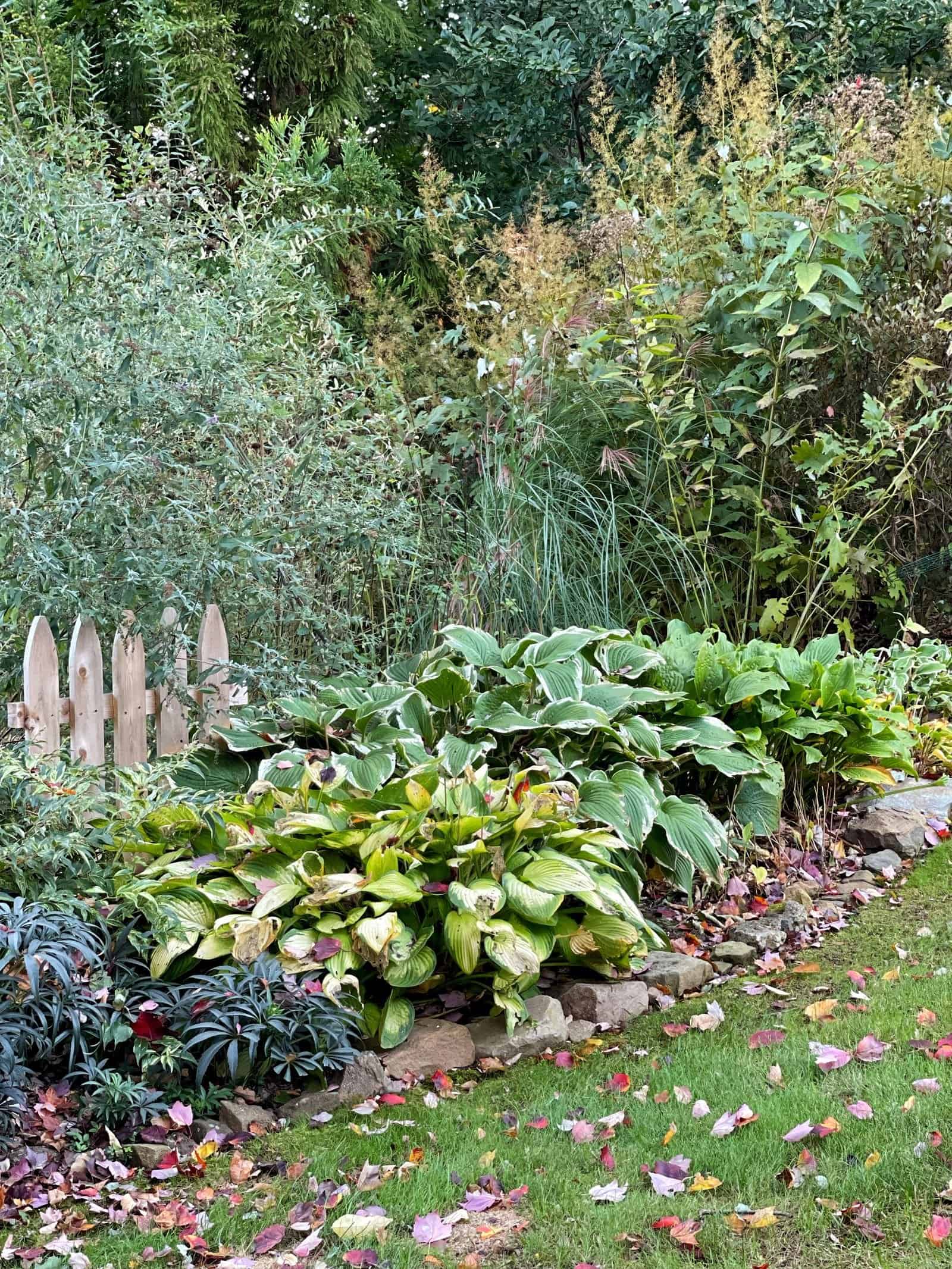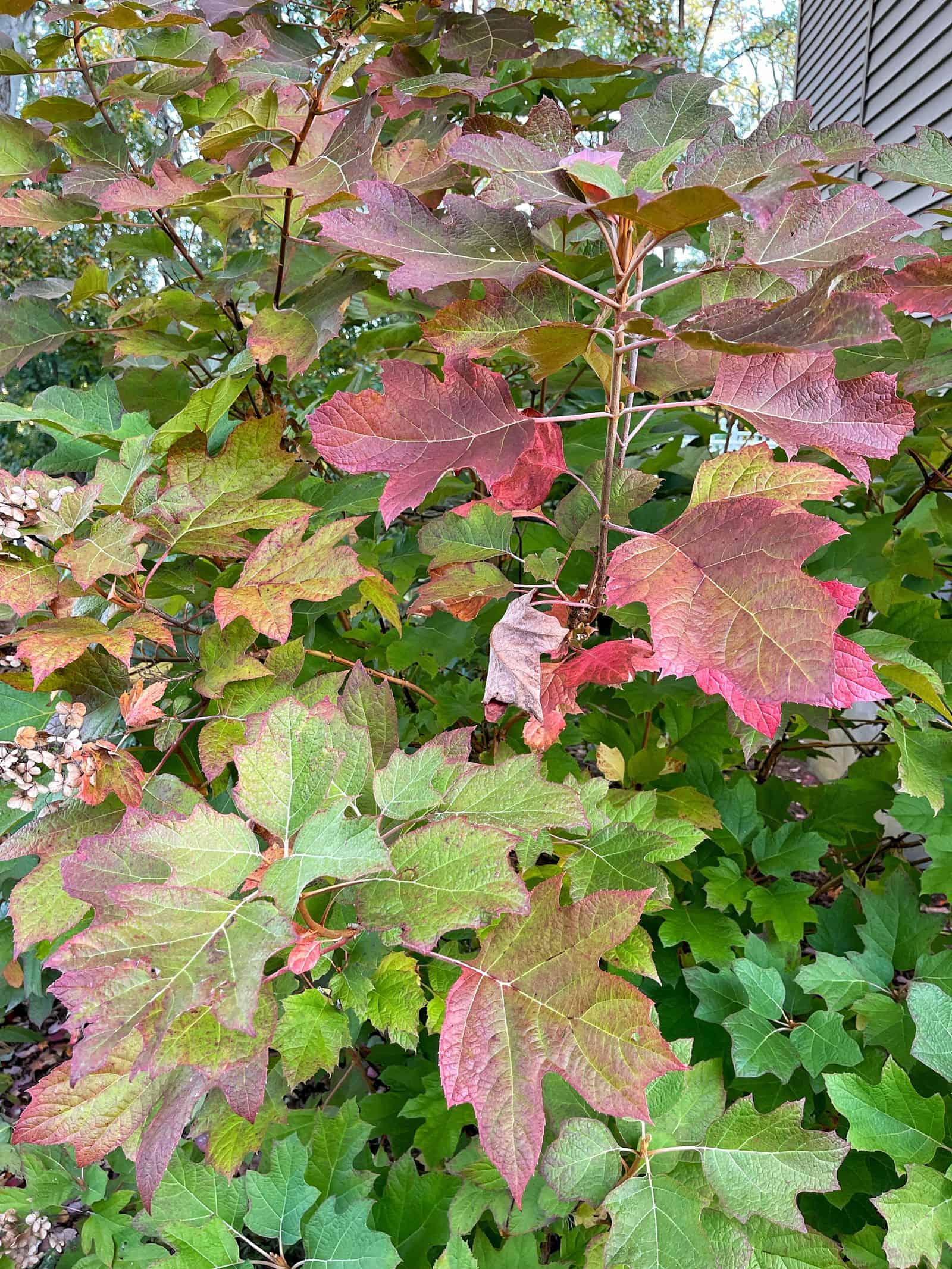Get your garden ready for spring with these 10 essential fall garden chores. Ensure a vibrant bloom next year with these simple tips.
As we move into fall gardening, it’s time to shift our focus to prepare our gardens for the dormant winter months.
While it may seem counterintuitive, the work you put in now will lay the foundation for a thriving and bountiful spring garden. By investing a little time and effort into essential fall garden chores, you can ensure healthier plants, better yields, and a less stressful start to the next growing season.
So let’s roll up our sleeves and get started on these 10 essential fall garden chores to prepare for an epic spring!
(Posts on stacyling.com may contain affiliate links. Click HERE for full disclosure.)
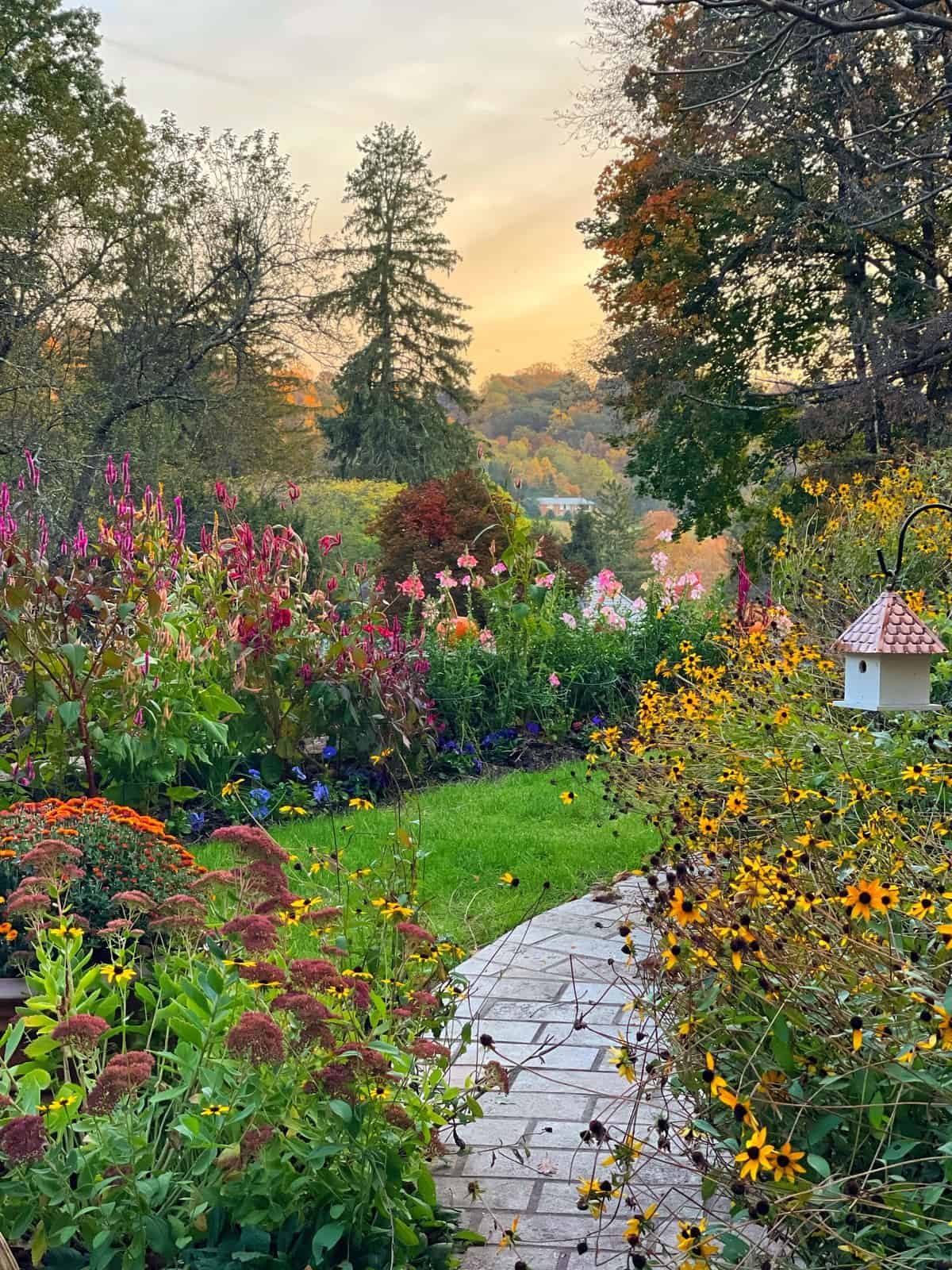
1. Clean Up and Remove Debris
Start by clearing away any dead plants, fallen leaves, and weeds. It’s a good idea to wait until after a few good frosts when annuals are completely done. This helps to prevent pests and diseases from overwintering in your garden.
Leaving leaves on the lawn can smother the grass and create an unsightly appearance. So, it’s important to remove leaves and debris from your lawn and garden for the most part. But make sure you save those leaves to make leaf mold!
However, you don’t have to be too meticulous at the same time! Leaving some plant debris, especially hollow stems and leaf litter, can provide valuable habitat for beneficial insects like pollinators and natural predators.
While it’s a good idea to remove leaves and debris from the beds, consider leaving perennial seed heads up during the winter from plants like Joe Pye, Sedum Autumn Joy, etc. to provide ongoing winter interest as well as feed the birds.
At the end of the garden season, it’s also a good idea to harvest any vegetables that are left. You can cut back perennials or leave them until spring. Remove annuals with the exception of pansies because they overwinter and will bounce back in spring. And it’s also a great time to add compost to the beds.
Tip: As you’re cleaning up your garden, take a moment to inspect your tools. Remove any dirt and debris, and give them a quick rinse. This simple step will help prevent rust and extend the life of your tools.

2. Divide and Transplant Perennials
Overgrown perennials can benefit from division in the fall. Dividing perennials promotes better growth and flowering in the following season. Simply dig up the clump, separate it into smaller sections, and replant them at the appropriate spacing.
3. Plant Spring-Blooming Bulbs
Fall is the ideal time to plant spring-blooming bulbs like tulips, daffodils, and crocuses. Dig holes at the recommended depth and spacing, place the bulbs with the pointy end up, and cover them with soil.
Read this post about how to plant bulbs in fall, where I shared a comprehensive, step-by-step guide that will help you cultivate an amazing spring garden.
4. Amend the Soil
Boost your soil’s health by adding compost or other organic matter. This improves soil structure, drainage, and nutrient content, creating a fertile environment for your plants. Fall is also a good time to test your soil pH and amend it if necessary.

5. Protect Tender Plants
Some plants need a little extra protection from winter frost. Mulching around the base of tender perennials and covering them with burlap or frost blankets can help them survive the cold. If you have potted plants, move them to a sheltered area or closer to your home’s foundation to provide some insulation. You can also wrap the pots in bubble wrap or burlap to help protect the roots from freezing.
6. Prune Trees and Shrubs
Pruning in the fall encourages healthy growth and helps to shape your trees and shrubs. Remove any dead, diseased, or overgrown branches. This also helps prevent breakage from heavy snow and ice. Be sure to research the specific pruning requirements for each plant in your garden. Because not all trees and shrubs should be pruned in the fall.
If you aren’t sure what shrubs and trees should be pruned in spring or fall, read this post I wrote that details everything you need to know about pruning hydrangeas, ornamental shrubs, and other woody plant.
Tip: After pruning, clean and sharpen your pruning shears or loppers. A sharp blade makes cleaner cuts, which promotes faster healing for your plants.
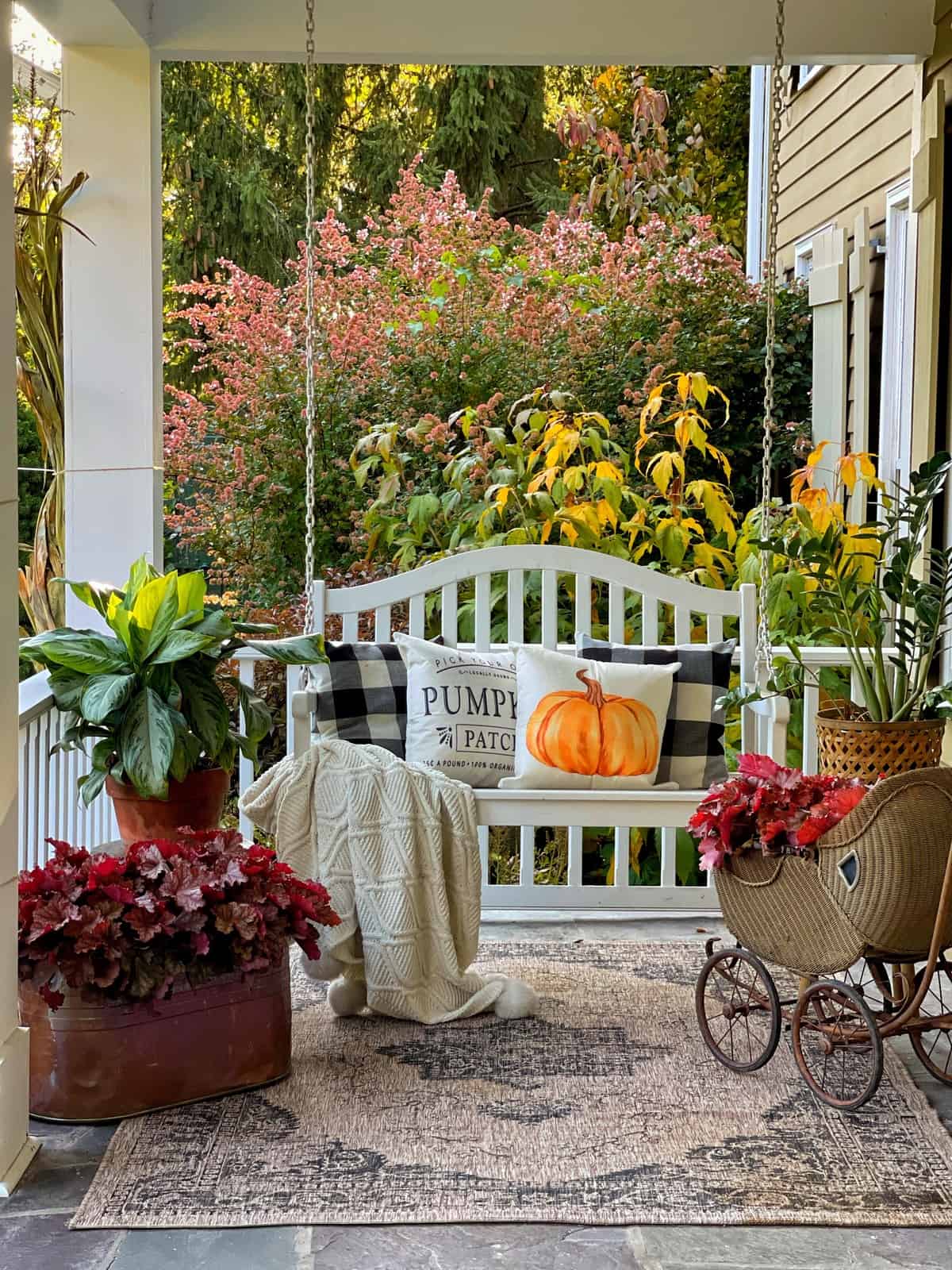
7. Plant New Gardens
If you’ve been thinking about planting more in your garden or you are starting new, there is no better time than the fall! It’s the perfect time to start planning for next year and take advantage of some great deals at your local nursery!
In mid-to-late October, you’ll find the best discounts on plants and flowers because they often mark down their stock by 40% or even 50% to move it before winter.
This is a fantastic opportunity to snag some bargains on perennials, shrubs, trees, and even spring-blooming bulbs. Not only will you save money, but you’ll also have a wider selection to choose from as nurseries try to clear their inventory.
Plus, planting in the fall gives your new additions a head start. The cooler temperatures and increased moisture help them establish strong root systems before the ground freezes, leading to healthier and more vigorous plants in the spring.
So, while you’re enjoying your fall gardening this year and planning for next season, don’t miss the opportunity to stock up on plants at bargain prices. Head to your local nurseries soon before their stock is completely gone!
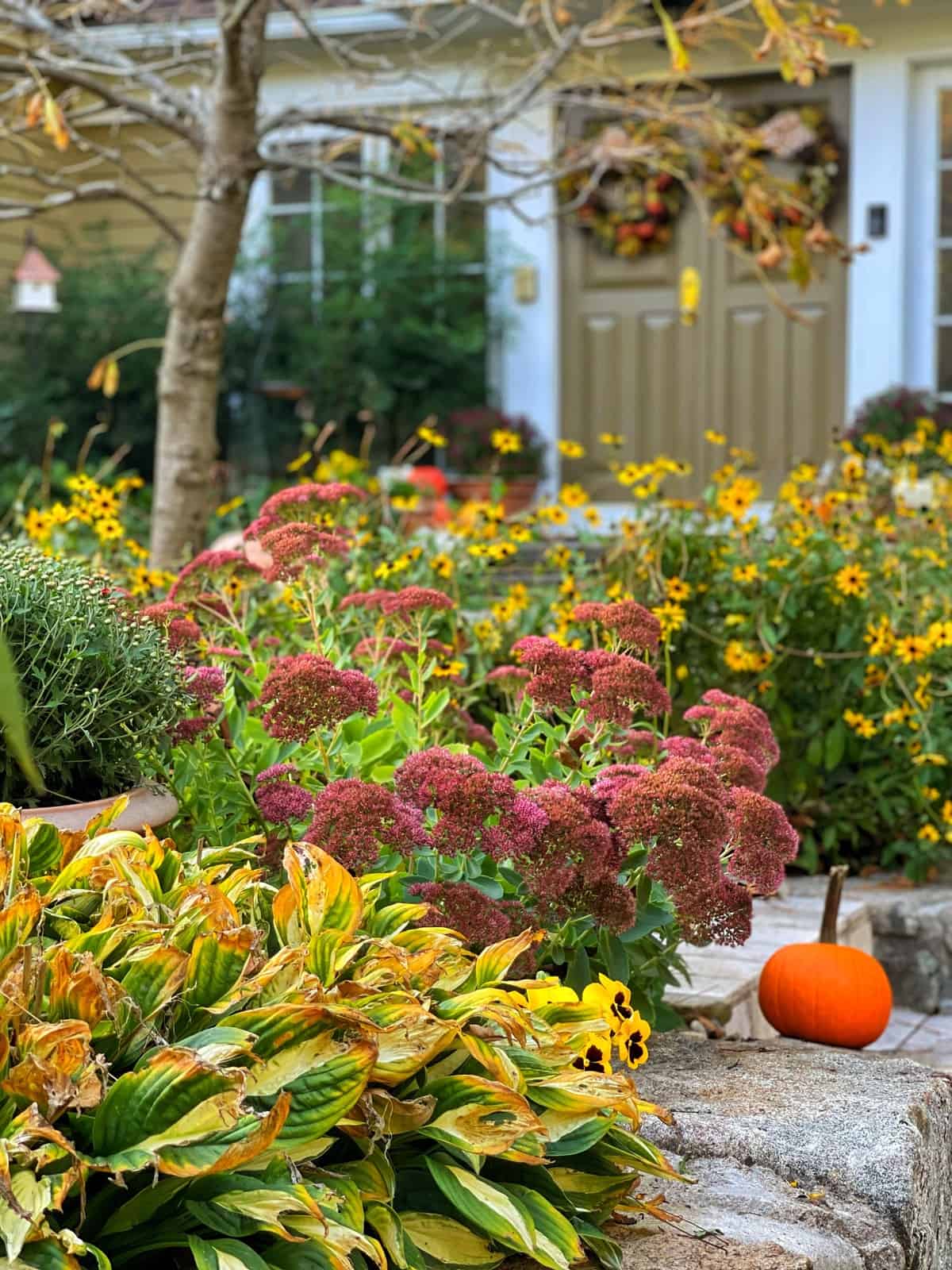
8. Water Deeply
Before the ground freezes, give your plants a deep watering if mother nature hasn’t been doing it for you. This helps them store moisture for the winter and reduces the risk of winter desiccation.
As the weather cools down, you’ll likely need to water your plants less frequently. However, it’s important to keep an eye on moisture levels and provide supplemental water if the weather remains dry.
In my zone 6b New Jersey garden, we usually get enough rain where I don’t need to manually supplement with water in my beds and borders. So I just let nature do it’s thing!

9. Harvest and Store Remaining Crops
Gather any remaining vegetables and fruits before the first frost. If you have plants that produce seeds you’d like to save, now is the time to collect and store them for next year’s planting. Store your harvested crops properly in a cool, dry place to enjoy throughout the winter.
I keep my potatotes, garlic and onions in a harvest storage basket that allows for some aeration like this in my basement and it works pretty well.
10. Clean and Store Garden Tools
Extend the life of your garden tools by cleaning and storing them properly. Remove any dirt and debris, sharpen blades, and apply a light coat of oil to prevent rust. Consider also storing garden hoses, terra cotta pots, and other garden decor that can get damaged by extreme winter conditions.
It’s also a great time to get yourself organized for the next growing season as you put away and store your tools.

My Favorite Fall Garden Chore
My favorite fall garden task is to shop for plants! As I just mentioned, you can purchase plants for a song and fall is the best time to plant anyway. Why? Because plant roots establish easier from fall through winter to spring, than they do from spring through summer to fall.
So if buying plants on the cheap isn’t enticing enough, planting in fall will make your gardening life that much easier getting those plants to establish.
Fall garden tip: When you are purchasing plants in the fall, check them for signs of pests and disease. We don’t want to bring any problems home to spread an overwinter in the beds.

The Final Fall Garden Chore: Reflect and Look Ahead
As you complete these fall garden chores, take a moment to reflect on the past growing season. What were your successes and challenges? What plants thrived, and which ones struggled? Did any gardening techniques worked well, and what could be improved? These reflections will help you make informed decisions for the next growing season, ensuring an even more beautiful and productive garden.
Remember, the work you put in now will pay off in the spring. So embrace the crisp autumn air, enjoy the changing colors, and get your garden ready for a spectacular bloom next year!
Have you gotten started on your fall garden chores? Do you have any other fall gardening tips to share? I’d love to hear from you in the comments below!
For more information about what to do in your fall garden, read this article from the Penn State Cooperative Extension.
To drill down on more beginner gardening techniques and tips, please read these posts:
- Flower Gardening 101
- Growing a Cut Flower Garden for Beginners
- Container Garden Ideas for Beginners
- How to Start a Vegetable Garden
- Herb Gardening for Beginners
Thank you so much for following along.
Enjoy a beautiful day! xo






